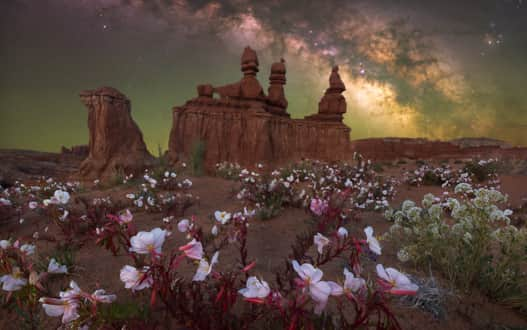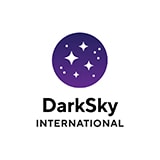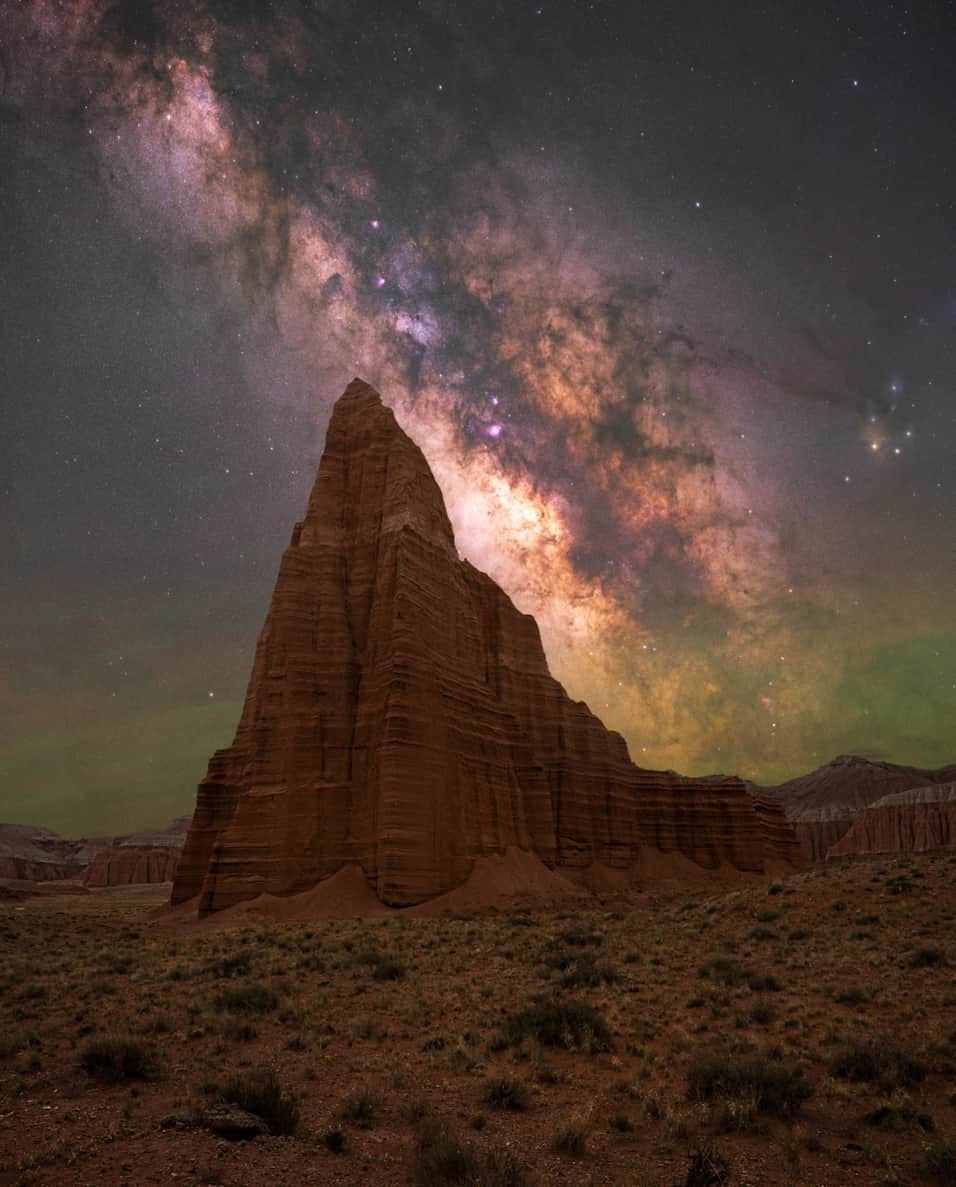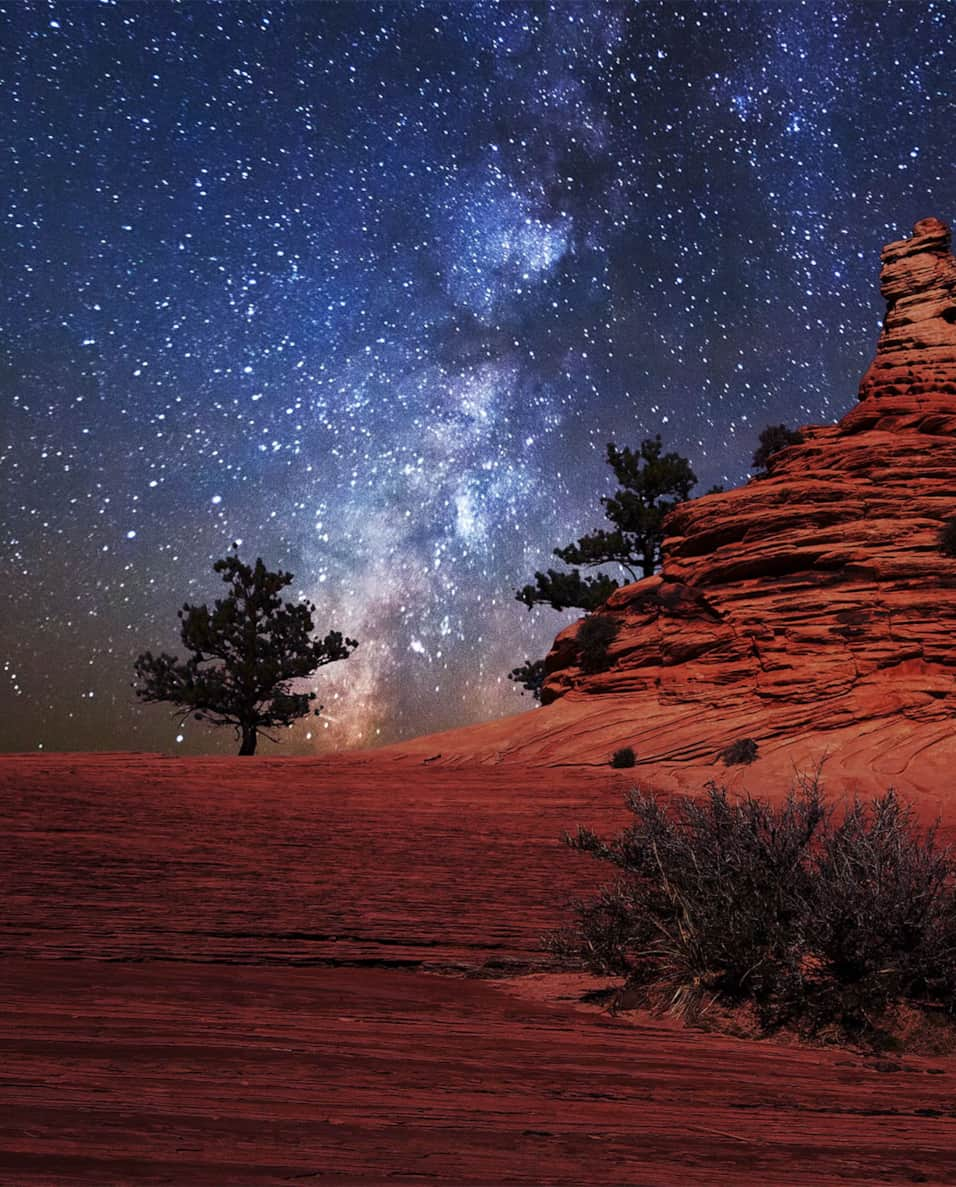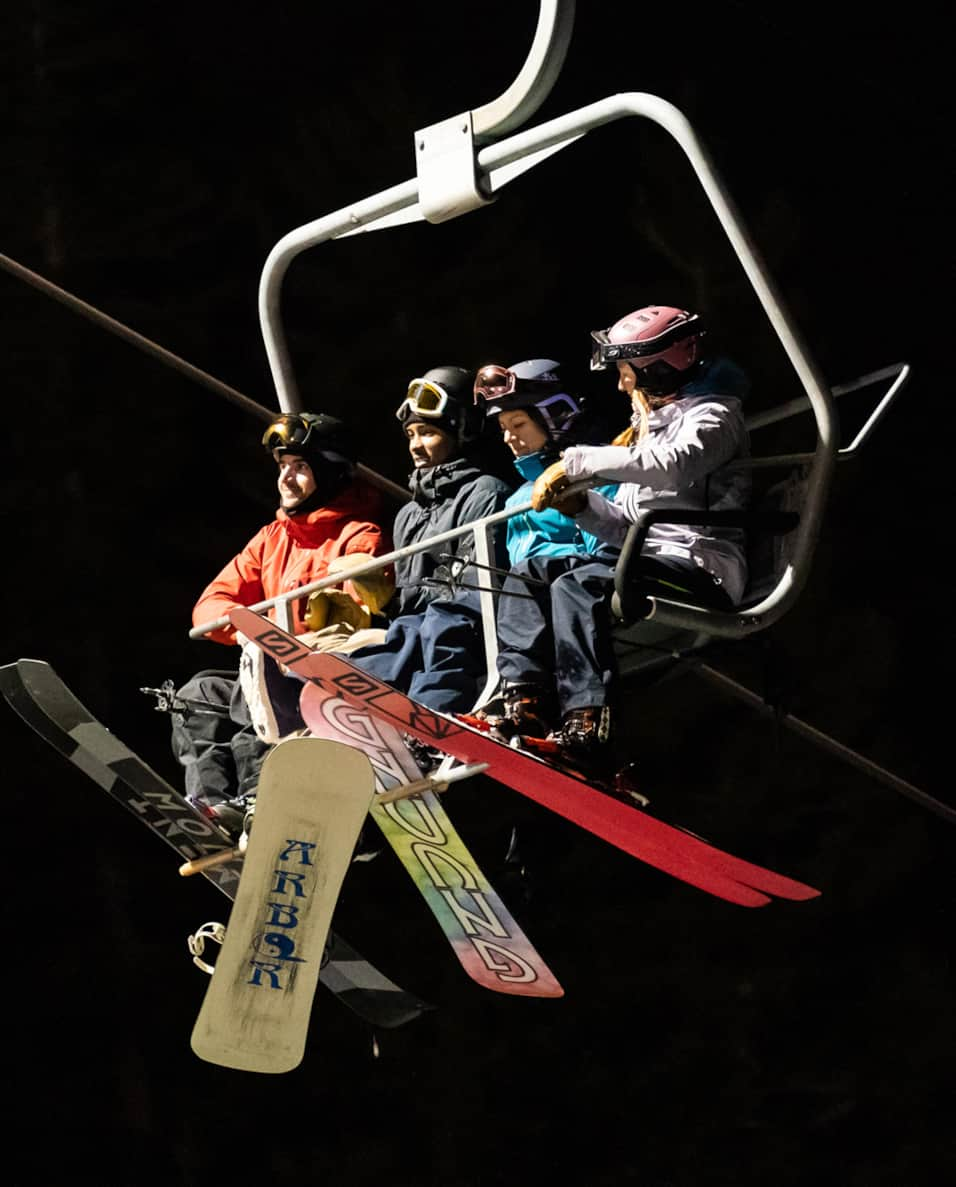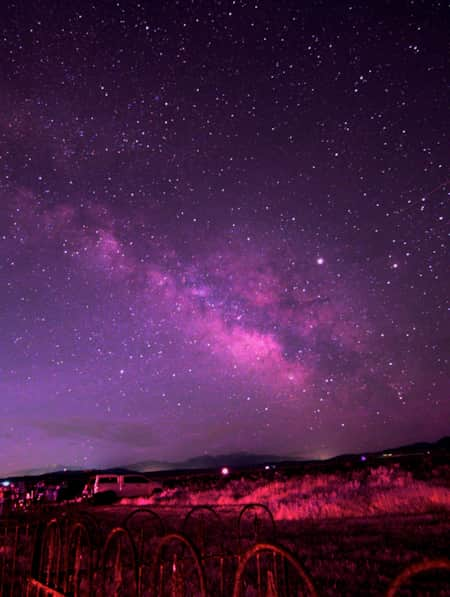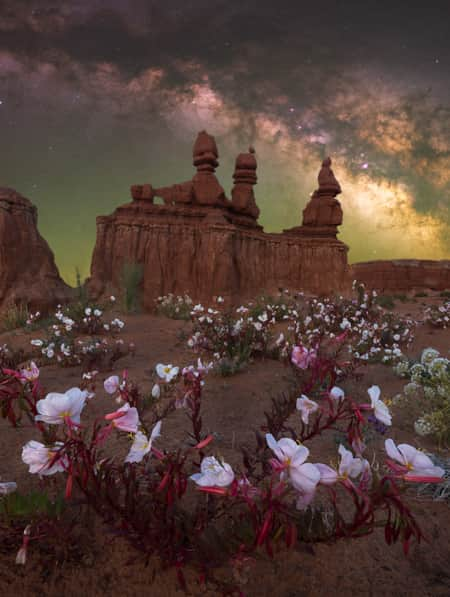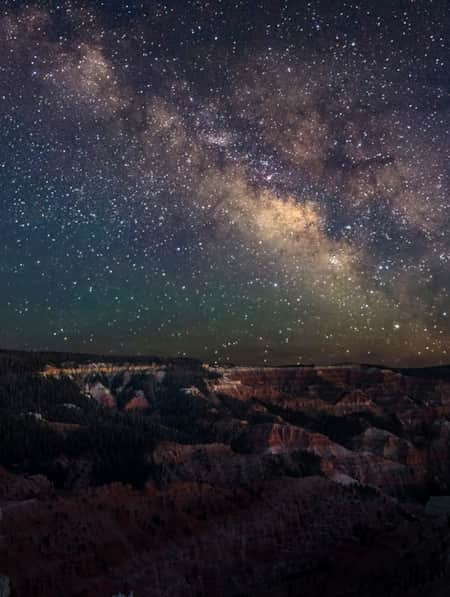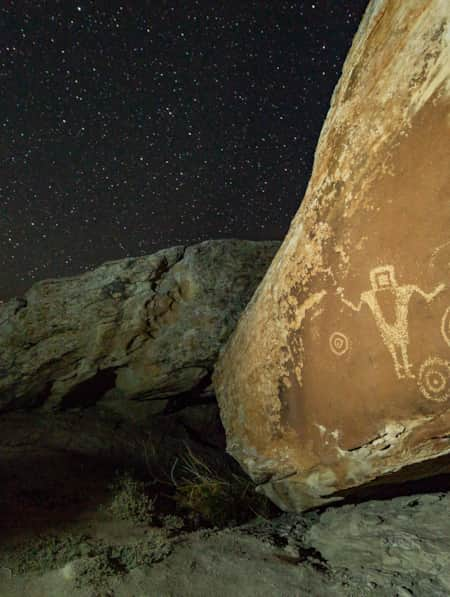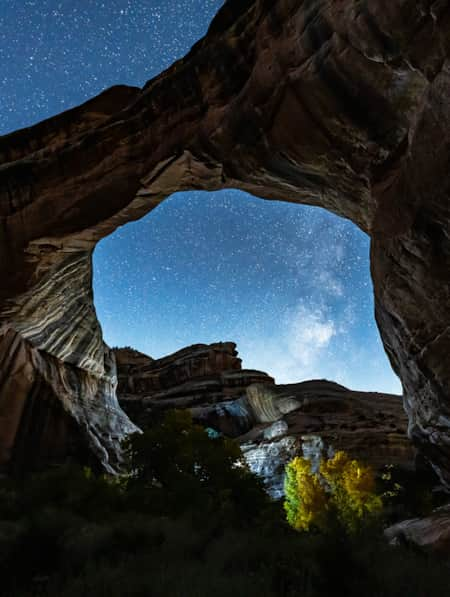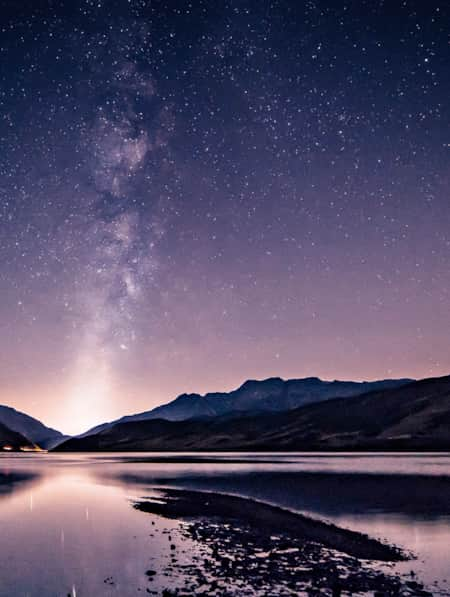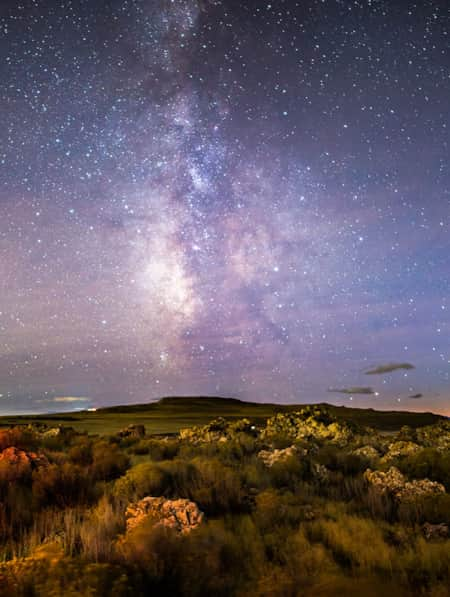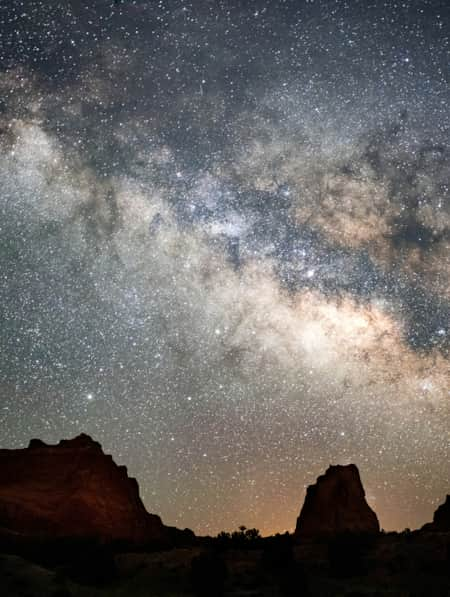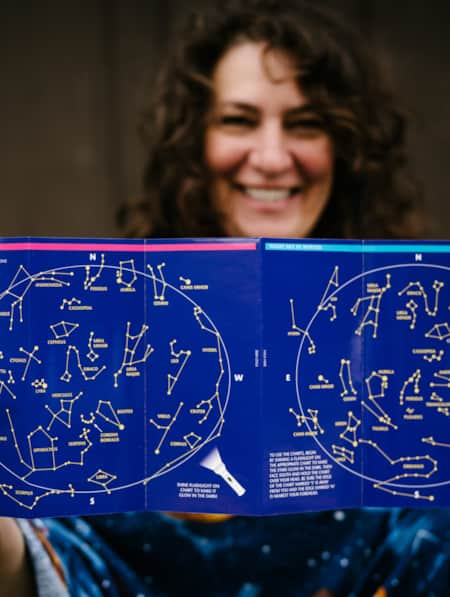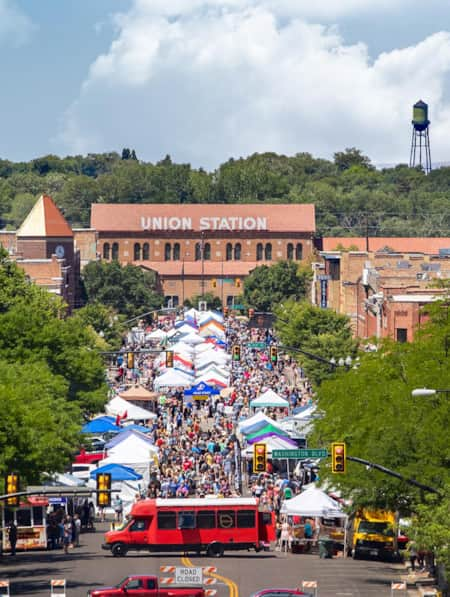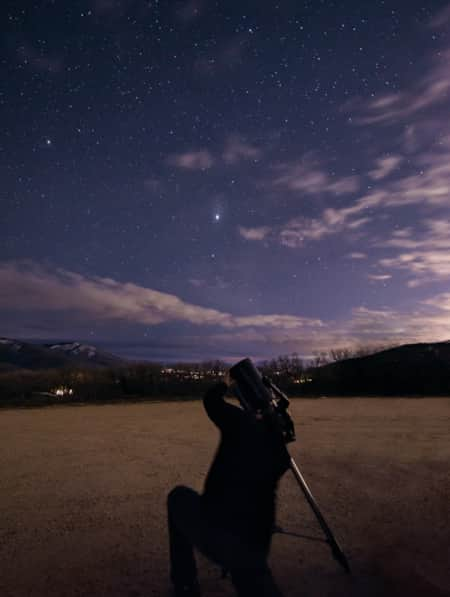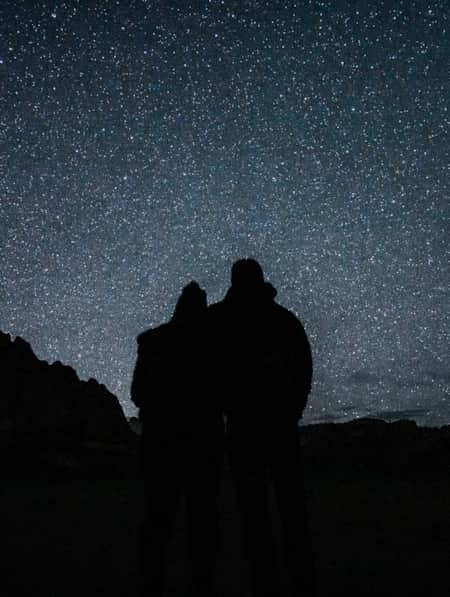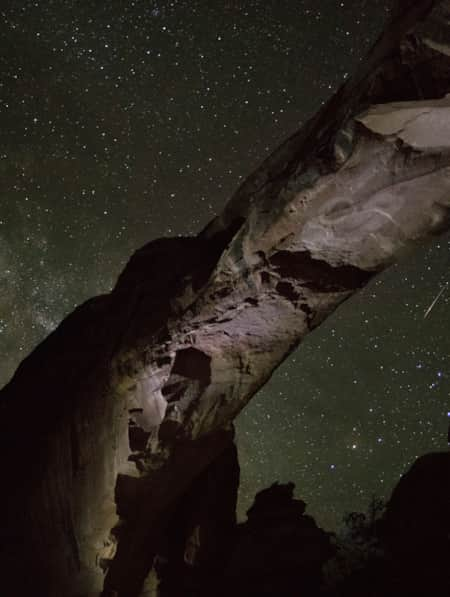Discover Utah’s Top Stargazing Spots
A Q&A with astrophotographer Bettymaya Foott on the wonder of the night sky and the best places to spot the stars in Utah.
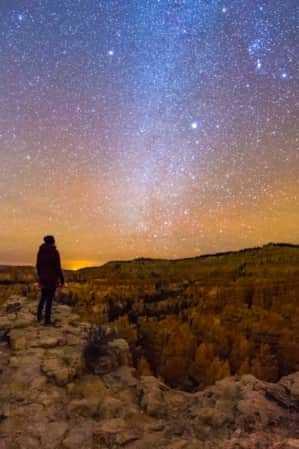
Each year, DarkSky International’s Capture the Dark contest inspires photographers around the world to venture out after sunset to reveal the wonder and importance of the night. Through powerful imagery, the contest showcases breathtaking images of star-filled skies and nightscapes, while also illustrating what we risk losing as light pollution continues to grow worldwide.
This year, Visit Utah joins as a proud Location Sponsor, introducing a special award category for photographs taken within the state. The goal? To highlight Utah’s extraordinary dark skies and invite visitors to experience the magic of its starry nights firsthand.
To help guide your next nighttime adventure or inspire your journey to photograph Utah’s stellar skies, we’ve teamed up with acclaimed astrophotographer Bettymaya Foott to talk about the best stargazing spots across her home state.
Featured in National Geographic Travel, Scape Magazine and more, Foott is not just a talented artist, she’s also a leading voice in the dark sky movement. As one of the original creators of the Capture the Dark and a staff member of the DarkSky International, her work bridges art and advocacy, inspiring people to see — and protect — the night.
Born and raised in Moab, Utah, an iconic destination framed by Arches and Canyonlands national parks, Bettymaya grew up under some of the clearest, darkest skies in the world. We caught up with her in her hometown to talk about her favorite dark sky destinations in Utah and what the night sky has taught her.
Utah is a global hotspot for outdoor recreation, including stargazing. What was it like to grow up in Moab beneath some of the darkest skies on earth?
I feel like one of the lucky few who can truly call this place home. Moab is the heart and soul of Utah. It’s what people picture when they think of the state — towering redrock arches, dramatic canyons and snow-capped peaks on the horizon. It still takes my breath away.
Growing up, I didn’t realize just how special it all was. The massive canyons and dark nights were just normal. I actually wanted to move to a big city and be like the kids I saw on TV. But looking back, I had the most magical childhood, floating the Colorado River, scrambling up canyon walls, imagining stories behind ancient petroglyphs. And when the sun went down, the adventure didn’t stop. My family would hike to Delicate Arch on new moon nights and have it all to ourselves.
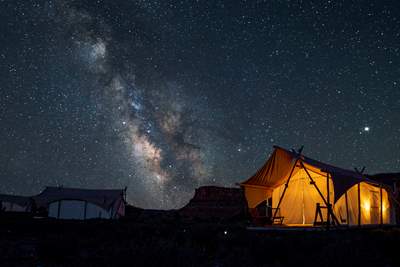
Today, more than 80% of the world—and 90% of North Americans—live beneath light-polluted skies. What did growing up with stars mean to you?
Having the cosmos on full display taught me the concept of infinity. I remember looking up and feeling overwhelmed—so many stars it looked like snow. The Milky Way stretched across the sky like a river of light. I’d hear people on TV talk about counting stars, and I couldn’t understand it. There were just too many.
It felt ancient, mysterious and universal. I assumed everyone had this same view — I didn’t know something so vast and powerful could be lost.
When did you realize how rare that experience really is?
I moved to Salt Lake City to study environmental sustainability at the University of Utah. It was the first time I lived without the night sky. I’d hike trails above the city and look out at the lights below — but when I looked up, there was nothing. Just a few bright stars and planets piercing the haze.
It felt like the city had stolen the stars and brought them down to earth. I felt disconnected. Without the stars, it was easier to get lost in my own small problems. That sense of perspective was missing.
Was it this sense of loss that led you to light pollution advocacy?
Exactly. In college, I first heard the term “light pollution.” It gave a name to what I’d felt but couldn’t explain. I knew then I’d found my calling. I wanted to protect the night.
After school, I worked with Utah State Parks and helped launch 12 International Dark Sky Park designations. I worked with the Colorado Plateau Dark Sky Cooperative and helped create the University of Utah’s Consortium for Dark Sky Studies, the first academic center focused on this issue. Then I joined DarkSky International, and I’ve never looked back. Utah’s night skies are a big part of why I do what I do. (Read: Reclaiming the Stars: Utah’s Dark Sky Initiative)
What changes have you seen in Moab over time?
Light pollution has definitely increased, not just in town, but in the parks and on the trails. As a kid, I could hike to Delicate Arch and be alone. Now, there are often many visitors wanting to experience and photograph the arch with the night sky.
Interest in astrophotography and dark sky tourism is growing quickly, which is amazing, but not without impact. That’s why DarkSky recently released Principles for Responsible Astrotourism and Astrophotography. We want to make sure that as more people discover the night, they also protect it. It’s about respecting the place, the wildlife and each other.
So, for anyone inspired to chase stars in Utah, where should they go?
There are so many amazing places, but here are some of my favorites:
Natural Bridges National Monument
It was the world’s first International Dark Sky Park, and it’s still one of the best. The skies are incredibly dark, and the stone bridges make perfect foregrounds for night shots—no long hikes required.
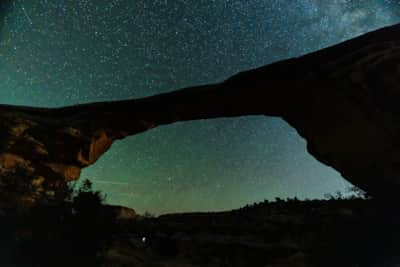
Arches National Park
Of course! It’s right in my backyard and always a favorite. And like all five of Utah’s Mighty 5 national parks, it’s now a certified International Dark Sky Park. That means the park is actively working to protect its night skies. Most people visit during the day, so at night, it’s easy to find quiet, crowd-free moments.
-copy.jpg?w=400&quality=65)
Northeastern Utah
This corner doesn’t get enough love. Places like Dinosaur National Monument and Steinaker State Park, near Vernal, have fantastic geology and incredible skies. They have a totally different vibe from the red rock in the south, definitely worth the trip.
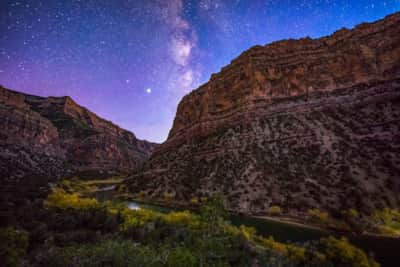
Just Outside Salt Lake City
People are always surprised when I say this, but some of my favorite spots are just an hour or less from Utah’s biggest city. Antelope Island, North Fork Park, East Canyon, Jordanelle, Rockport, Deer Creek, and even Timpanogos Cave are all designated Dark Sky Places. When I lived in Salt Lake, I’d drive to Antelope Island just to get my star fix.
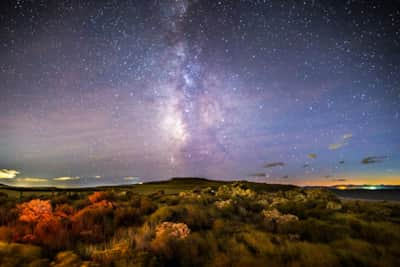
Any secret spots you’re willing to share?
I do have a few tucked-away backcountry locations that I’ll keep to myself. But honestly, the magic is in finding your own spot. Utah is full of places to discover. Just remember, stay on the trail, be courteous to others and don’t bring excess light. Use red lights when you can. Let your eyes adjust. Let the night guide you.
Final thoughts for aspiring astrophotographers and night sky lovers?
We’re living in a moment when more people than ever are looking up, and that’s a beautiful thing. But with that comes responsibility.
Light pollution is growing at an alarming rate of 10% each year, dimming our view of the night sky and threatening the magic that comes with it, from our view of the Milky Way to the critters who depend on darkness.
That’s why we created Capture the Dark, to raise awareness through photography about the beauty of the night and the urgent need to protect it.
I encourage everyone to head out after dark into these incredible parks and wild places and experience the night sky firsthand. But do it with care. Be mindful of your impact. Minimize unnecessary or overly bright light. Respect the darkness.
If you photograph the stars or hike under moonlight, use your camera not just to capture beauty but also to inspire others to help protect it.
Capture the Dark
Capture the Dark is the premier nighttime astrophotography contest created by DarkSky International to showcase the wonder and importance of the night. But it has proven to be more than just a photo contest, it’s a celebration of dark skies and a powerful call to action to protect them.
Open to participants worldwide and free to enter, DarkSky International invites both professional and amateur photographers to share their unique perspectives of the night. Learn more, browse the gallery of submitted images, and enter your own image of Utah’s stunning night sky today at darksky.org/capturethedark.
